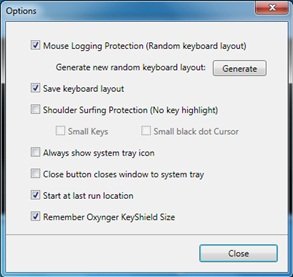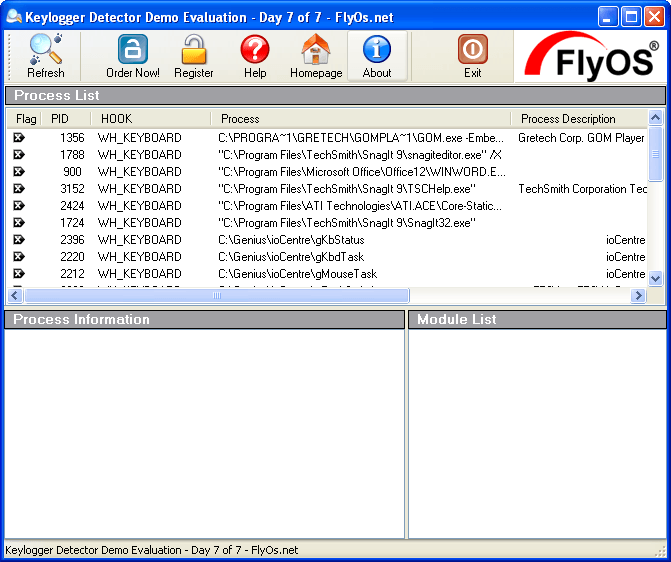

- #KEYSTROKES LOGGER DETECTION CRACKED#
- #KEYSTROKES LOGGER DETECTION INSTALL#
- #KEYSTROKES LOGGER DETECTION SERIAL#
- #KEYSTROKES LOGGER DETECTION DRIVERS#
- #KEYSTROKES LOGGER DETECTION CODE#
Running on the hardware, there's nothing on Windows indicating anything: no delays, no extra traffic on the USB cable, no strange control messages anywhere, no custom drivers. It's so simple that we don't think about it. If you press keys to start programs, and type things on the program, that's the keyboard running and controlling a process. Is it possible that a USB keyboard could host a keylogger and that Windows could give it control to run a process to send the information to an address? Your keyboard is way more trusted than your cellphone. Still, it's not outside the realm of possibility. Some keyboards firmware have been reverse engineered already (again Keyboard enthusiasts) and vendors have even tried encrypting the firmware packages to prevent this. It would not be trivial, but is totally possible to write a keylogger using the open source codebases as a starting point (TMK being the most established: ) You could then use the same methodology as a rubber ducky and send commands through the keyboard itself to create the agent that sends the keystrokes to the remote location.
#KEYSTROKES LOGGER DETECTION CRACKED#
I'm reading the question and seeing "could the keyboard" and what comes to mind is that most keyboards I've cracked open have an Atmel32u controller, these controllers are running a firmware that is field programmable (though they may not have easy to reach breakouts for jtag/uart.) There are open source projects (Openhardware) that keyboard hobbyists have been building now for the better part of a decade based around the Atmel32u series processors.
#KEYSTROKES LOGGER DETECTION CODE#
Even if the user noticed the windows popping up before sliding out of view, it can happen so fast the typical victim won't have the chance to figure out what's happening.Īs I said, these are commercially available and open source products you can buy today the source code for the evil devices and the "ducky scripts" that do the phantom typing are all hosted on github. Finally, after all the secrets have left the building, it types to restore the browser, then quickly types F4 to close the tab. Next, the fake keyboard starts typing all its logged keystrokes into the input box (base64 encoded, naturally), and hitting when finished. Now, imagine the rogue keyboard hitting to slide the browser window completely off the screen, hiding it from the user's view. By hitting R, then typing * it can bring up a mostly empty-looking page with a hidden input box located so far down the screen that you need scroll bars to find it.
#KEYSTROKES LOGGER DETECTION INSTALL#
Of course it could install a key logger, then harvest the data at a later time.) When it's time to send the data, it generates USB messages that contain keystrokes, but the user isn't typing them. (The BashBunny does not contain a keylogger it gets its data from scanning the host system. Imagine that the hidden USB device contains a data logger, and records your secrets for a day or two. Here's a simplistic example of how they could exfiltrate data through the victim PC. Such devices can exfiltrate captured data via the victim PC simply by emulating a USB keyboard and typing instructions to send it elsewhere.
#KEYSTROKES LOGGER DETECTION DRIVERS#
The emulated devices leverage the existing signed Windows drivers that are used by generic chipsets.
#KEYSTROKES LOGGER DETECTION SERIAL#
The BashBunny works by running a small Linux computer that emulates generic USB keyboards, USB mass storage devices, USB serial ports, and/or USB network adapters. The BashBunny is a commercially available hardware implementation of a USB chameleon that performs these kinds of tasks the USB Rubber Ducky is simply an Evil Keyboard Simulator. But now, there are new options that are even more sophisticated. There are even open source implementations available from the NSA Playset project, which are devices designed to emulate the spy devices found in NSA's leaked and now infamous ANT catalog. Such keyloggers have been commercially available for many years. He can plug it in and let it sit there forever. The Bluetooth loggers require the attacker to come into range to dump their contents, but a WiFi based adapter that's pre-configured with a network key doesn't even require the attacker to be present to win.

Regular USB key loggers that exfiltrate their data via Bluetooth or WiFi can easily be hidden inside a keyboard.


 0 kommentar(er)
0 kommentar(er)
